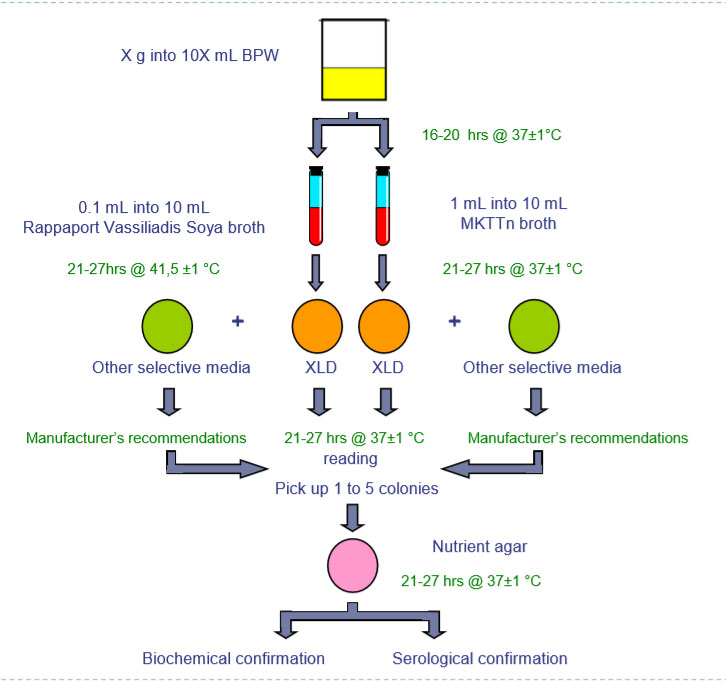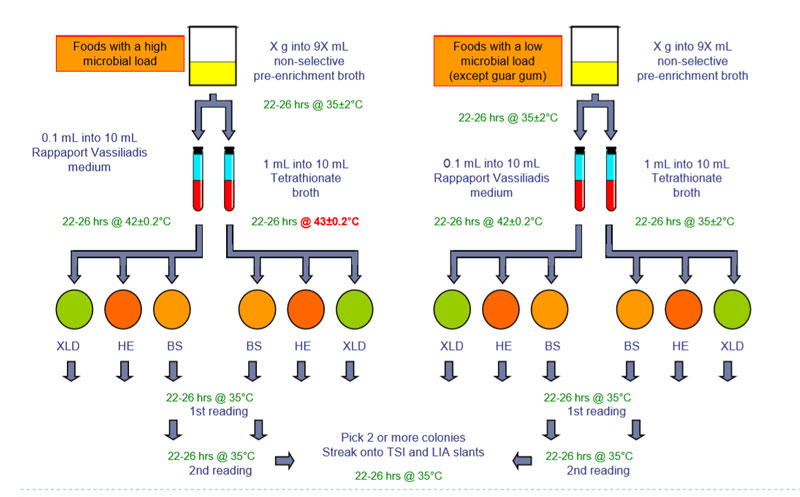Food Safety - Salmonella
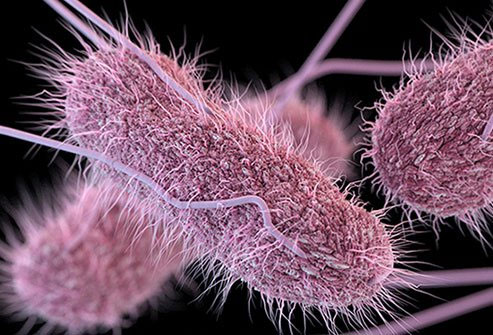
Food Safety
Salmonella
Testing for Salmonella for Food and Feed Manufacturers
Salmonella is one of the most common causes of food poisoning. The American CDC estimates that it causes 1 million food borne illness per year. Recent outbreaks of salmonella has been linked to contamination of cucumbers, chicken, eggs, pistachios, raw tuna, chocolate etc. As such this is the most common pathogen tested by food and feed manufacturers. Feed manufacturers also routinely test for salmonella because it has been proven that feed contaminated with salmonella can infect animal husbandry. Bioscience Diagnostics supplies conventional, lateral flow, ELISA and PCR Tests Kits for salmonella.
Salmonella is gram negative bacteria and has non motile and motile strains. They are broadly classified into typhoidal and non-typhoidal salmonella. The non-typhoidal serovars, typhimurium and enteritidis are the most common cause of gastrointestinal disease. S Typhimurium has large plasmids which confer resistance to a range of antibiotics like ampicillin, chloramphenicol, streptomycin etc. Salmonella actually belongs to the family Enterobacteriaceae and there are two genus, namely Salmonella bongori and salmonella enteritidis. So, the correct taxonomy for typhimurium is Salmonella enterica sub specie enterica serotype typhimurium. There are more than 2600 serovars of Salmonella.
Salmonella Detection Methods
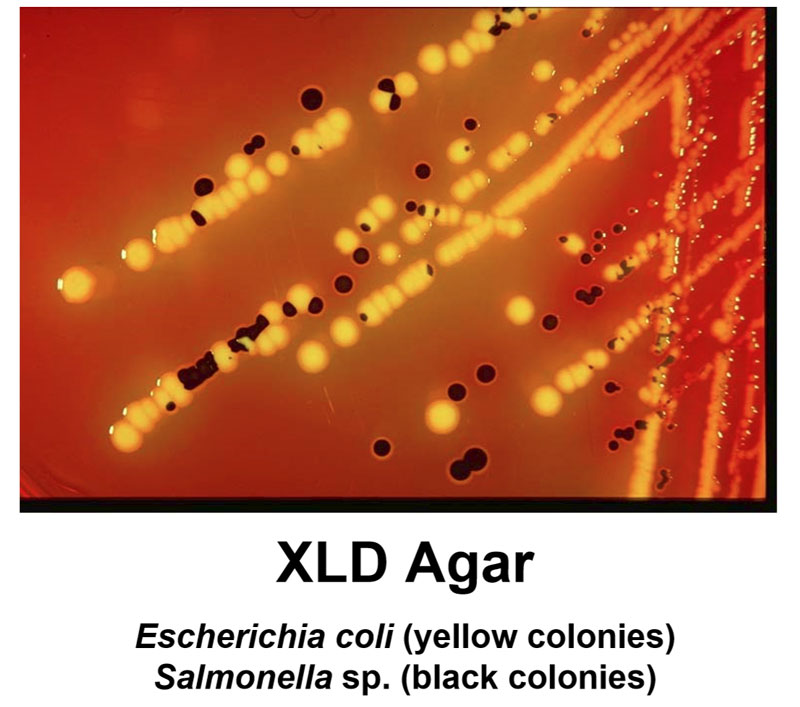
Biolife Xylose Lysine Deoxycholate Agar is a selective and differential agar for the isolation of salmonella. It is also the standard media for isolation of shigella. Shigella does not ferment xylose and grows as red colonies. Xylose fermentation, lysine decarboxylation and the production of hydrogen sulphide from sodium thiosulphate is the basis of the agar. Sodium deoxycholate inhibits the formation of gram positive organism, the phenol red acts as a pH indicator, and the ferric ammonium citrate indicates the production of hydrogen sulphide.
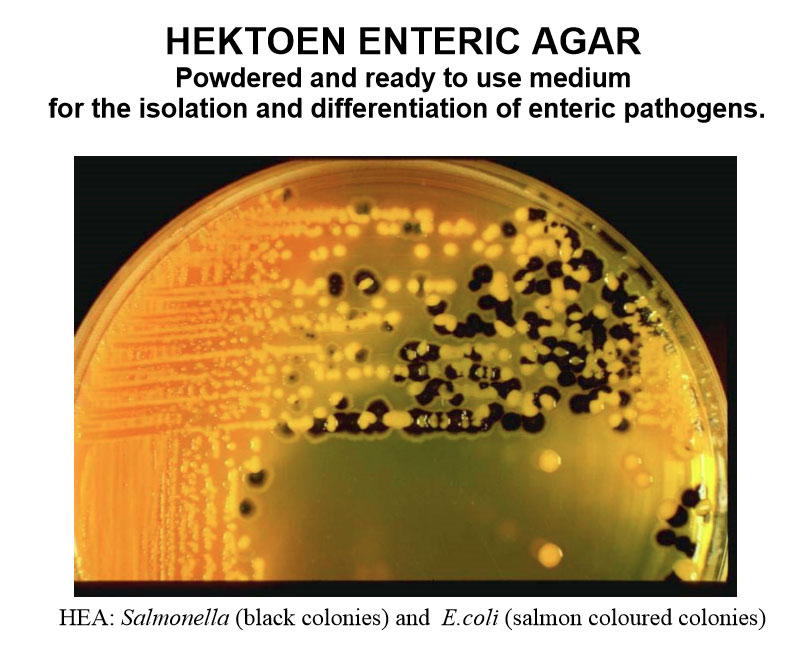
Biolife Hektoen Enteric Agar is a selective medium for the isolation and differentiation of salmonella. It also differentiates shigella which grow as light green colonies. Salmonella shows up as blue green or blue colonies with or without black centers with the medium changing to dark blue. Pseudomonas show up as green or brown colonies and the medium changes to dark blue. Coliforms grows poorly or show up as yellow salmon colony and the medium change to red and becomes opaque through the precipitation of bile salts.

Biocontrol GDS PCR System for Salmonella
This is a PCR system for accurate, rapid identification of salmonella. The system uses multiple layers of specificity including pick pen for removing matrix interference, highly specific primers and a patented MGB eclipse probe. GDS assays have AOAC, AFNOR validation. Results are available in 24 hours.
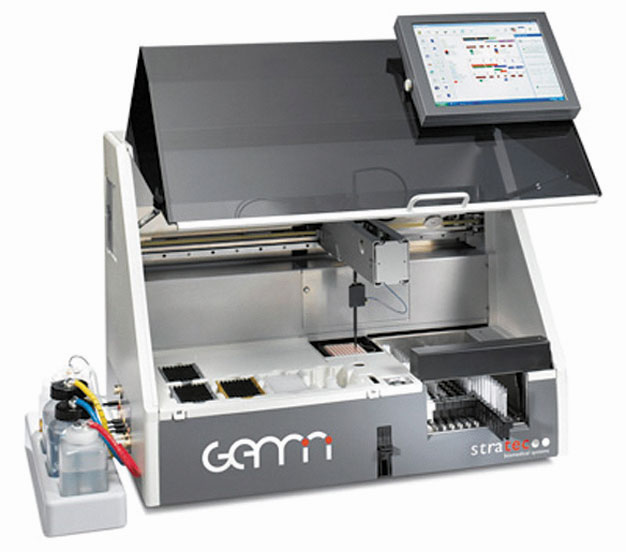
Immunoassay Technology is a high throughput method that can be used to detect Salmonella. Extensive AOAC and AGNOR validation along with built in positive and negative controls provide users with confidence in results. The test is carried out in microtiter plates. Walk away automation is provided with the Gemini system.
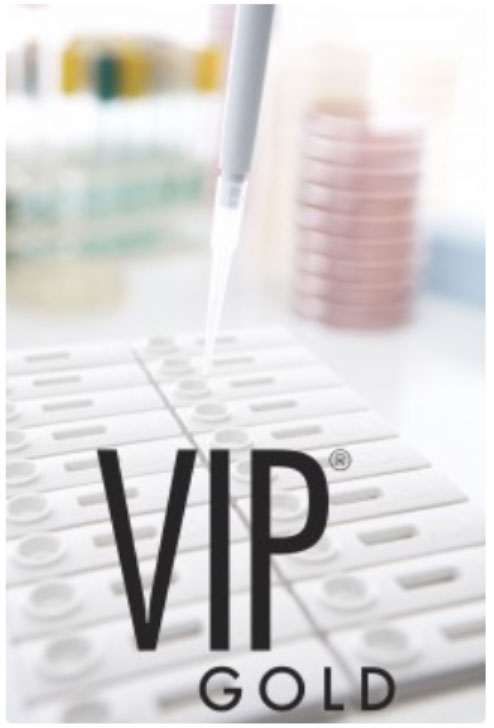
Biocontrol VIP Gold is a lateral flow immunoassay for detection of salmonella. Enriched samples is added to a window are combined with gold colloid particles specific to the target and then draws across a nitrocellulose membrane. If the salmonella is present, it is captured and bound to the colored particles to form a line. The remaining particles continue to form a control line. It is a simple user friendly for low and medium volume users.
LEARN MORE
Reach Us Today

We provide the best services about science.
About Company
Sitemap
Please contact our friendly sales staff for more information.
Feel free to ask us questions. We would love to assist you !

